
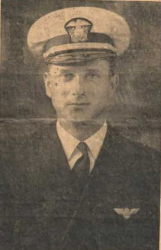 |
|
|
||
|
WILLIAM PRICE WEST 'Willie' |
||||
|
Engagements: • World War II (1941 - 1945) |
||||
| Biography: | ||||
|
William Price West Ensign, United States Naval Reserve Secretary of the Navy Letter of Commendation & Purple Heart Bill was a son of LtCol Emory Scott and Elizabeth Magdolen Price West who married 24 Oct 1899 in Jefferson, Greene, IA. Bill's siblings were Georgia V., Iowa Texas, Juanita Delores, Joseph Benjamin, Emory Scott Jr., Elizabeth Gwendollen, and Earl John West (d.y.). Col. West, a graduate of Redfield College, Redfield, SD, was a US Army veteran of the Spanish American War and WWI. According to his military records, Col West was the high school ROTC instructor at Davenport, IA (22 Sep 1924-15 Aug1932). When he retired from his ROTC duties, Col West had enrolled some 400 students in that year. William "Bill" West graduated from Davenport high school in June 1931. His classmates said this about him in their yearbook, "Genuine wit implies no small amount of wisdom and culture." Bill was active in sports -- football, track, cheer leader, as well as other activities such as R.O.T.C. where he was a Lieutenant Colonel; Senior Class Social Committee; and he was in the Senior Class Play called "The Swan." He played George. Following his graduation from high school, Bill came to Ortonville, MN and made his home with Mr. and Mrs. H.L. McDowell. He was a cousin of Mrs. McDowell. He attended the University of Minnesota for four years. He was of stocky build and athletic. West was a boxer and all-fraternity handball champion at the University. He graduated from the University of MN with 1,979 other graduates, including his future wife, Nancy Earle Wallace, at commencement exercises on 13 June 1938 w/B.B.A. (Bachelor of Business Administration). Nancy and William’s names were on the list of graduates published in The Minneapolis Star paper of 13 June 1938 on pages 4 and 5 respectively. Their senior photos were not in the 1938 University of Minnesota yearbook although his was with the fraternity, Tau Kappa Epsilon. She was a member of Alpha Chi Omega sorority. Later newspaper articles credit him with graduating in either 1936, 1937 or 1938. The following year, Bill applied for enlistment in the US Volunteer Naval Reserve Flight Training Program (V-5). The application process required of him to present his birth certificate, a personal resume, college and high school transcripts, personal references, a police background check and a recent photo. He was also required to undergo a physical and dental exam. Finally, he had to sit for an interview with the Naval Reserve Flight Selection Board at Naval Reserve Aviation Base (NRAB), Wold-Chamberlain Field, Minneapolis. The board recommended his acceptance. He was accepted into the program and enlisted as a Seaman Second Class (S2c) in December 1939. He was ordered to elimination flight training at NRAB, Wold-Chamberlain Field. He successfully completed the basic flight training phase in January 1940. He was released from active duty and sent home to await further orders. In March, S2c West received a letter from the Secretary of the Navy offering him an appointment as an Aviation Cadet. He returned to NRAB, Wold-Chamberlaine Field where he was discharged from enlisted status on 24 Mar. He accepted the appointment to serve four years and took the oath of office as an Aviation Cadet the next day, 25 Mar 1940. West was to proceed to Pensacola, Florida and prior to 01 April report to the Commandant, Naval Air Station (NAS) for active duty undergoing flight training. Aviation Cadet William P. West was enumerated at NAS Pensacola for the 01 April 1940 Escambia County, FL US Federal census. He was assigned to Class 140-C; a class of 31 Aviation Cadets. In October 1940, West completed primary flight training. He detached from duty at NAS Pensacola and reported for duty to NAS, Miami (Opa-Locka), FL for temporary duty with the Advanced Training Specialized Carrier Group. The training was for officers who were to be carrier-based pilots. On 01 Nov 1940, West was designated a naval aviator (heavier-than-air) at NAS Miami. He was detailed to duty involving actual flying in and control of aircraft. West was commissioned an Ensign in the Naval Reserve of the United States Navy when he accepted the commission and took the oath of office in mid-Nov. His date of rank was 01 Nov 1940. He received orders to report to the Fleet Air Detachment, San Diego, CA, and when directed report for duty to the Commanding Officer, Scouting Squadron Six (VS-6), USS Enterprise. He was allowed a delay in reporting to count as leave. On 27 November 1940, Ensign West detached from NAS, Miami. Prior to his departure he received $150.00 uniform allowance. Ensign West drove from Miami to St. Petersburg, FL where he married Miss Nancy Earle Wallace the next day at the home of his parents, Col and Mrs E.S. West. The couple left Florida and made a brief stop in Minneapolis and Ortonville, MN for a visits with Nancy's family and the McDowells before heading across the country to San Diego. Ens. West reported to the Fleet Air Detachment, San Diego in late December 1940. In early January 1941, Ens. West reported for temporary duty to the Advanced Carrier Training Group, US Pacific Fleet in San Diego for 2 months of carrier pilot specific advanced training. His training completed, Ensign West reported to Scouting Squadron Six about March 1941. He was known in the squadron as Willie. USS Enterprise (CV-6) was commissioned on 12 May 1938. During 1939, Enterprise and her embarked squadrons conducted shake down cruises and work-up exercises at various times. While the ship was inport the squadrons were temporarily based ashore at their assigned airfields. In Sep 1939, Enterprise became part of the Hawaiian Detachment of the U.S. Fleet whose homeport was Pearl Harbor. In Jan 1940 Enterprise was engaged in exercises in Hawaiian waters. In early Feb she steamed for Puget Sound Navy Shipyard for an overhaul after making a brief port call in San Diego. In late May, Enterprise, her overhaul completed, returned to San Diego for about a month. She returned to Pearl Harbor on 2 July 1940. Enterprise conducted exercises from August to early Nov in the Hawaiian area. Then on 09 Nov she steamed to San Diego until 2 Dec when she got underway for the Puget Sound Navy Shipyard in Bremerton, WA. She returned to Pearl Harbor on 21 Jan 1941. During 1941 Enterprise made 13 round trips between Hawaii and San Diego from April - Nov conducting exercise cycles and squadron work-ups. During those months she also shuttled Army Air Force P-39s and P-40s, as well as, Navy aircraft from US West Coast ports to Pearl Harbor and beyond. On 28 Nov 1941, Enterprise, now operating in a war-time steaming condition, left San Diego with a cargo of Marine Fighting Squadron 211 (VMF-211) aircraft and pilots destined for Wake Island. The Marine pilots and their planes flew from Enterprise to Wake Island on 02 Dec 1941. Enterprise was scheduled to arrive back in Pearl Harbor on 06 Dec, but was delayed due to inclement weather. In the early pre-dawn hours of 07 Dec 1941, Enterprise was 200 miles west of Oahu heading for a late afternoon docking at Pearl Harbor. Admiral Halsey planned to send 18 SBD dive bombers to search 150 miles ahead of the task force as a normal precaution. Instead of returning to Enterprise, the search flight was to continue directly to Pearl Harbor. The rest of the air group would follow that afternoon before she entered port. Leading the mission was Lcdr Howard L. Young, Commander Enterprise Air Group in his own SBD, Thirteen dive bombers from Lcdr Halstead L. Hopping’s Scouting Six (Including Ensign West flying SBD 6-S-5) and four from Lcdr William R. Hollingsworth’s Bombing Six. Launching began at 0618. Operating under strict radio silence, Halsey had not alert Pearl Harbor that his dive bombers were coming. He assumed his aircraft would not have any trouble identifying themselves, and ordinarily they wouldn’t. However, at 0755, 183 Japanese fighters, bombers and torpedo planes swarmed over the unsuspecting US Pacific Fleet. When the dive bombing group arrived over Pearl Harbor they were attacked by Japanese aircraft and shot at by friendly AA fire. West followed his wing-man - Lt Earl Gallaher to Ewa Field. There, however, the marines told them to take off and return to Ford Island. Along the way, friendly AA fire damaged West's SBD making West among the first Navy aviators to come under fire during the Pacific war. Among the group seven SBDs were shot down, either from enemy action or friendly fire, Eight airmen were killed and two wounded. After the debacle at Pearl Harbor, Enterprise was sent on a belated attempt to relieve Wake Island. On 09 January 1942, Admiral Nimitz directed Admiral Halsey to raid the southern Marshall and northern Gilbert area employing air attack and ship bombardment. On 01 Feb 1942, Enterprise with TF 8 raided Kwajalein, Wotje, and Maloelap in the Marshall Islands marking the first offensive action by US forces in the Pacific. During the attacks the primary objectives for the scouting squadron was to make a gliding attack to strafe and drop 100-pound bombs on the air field, planes on the ground, hangers, fuel tanks, and other installations on both Roi and Kwajalein. The scouting squadron was composed of a three-division formation. Ensign West was flying with his radioman/gunner AMM3 Milton Wayne Clark in aircraft 6-S-12 in the second division. As the attack developed, enemy fighters were seen to be coming to attack and a considerable amount of antiaircraft fire was evident from the ground. Meanwhile additional enemy planes had joined those already in the air with the result that numerous individual fights ensured. It was during this action that Ens. West was jumped by a pair of Claude fighters as he flew across Roi. His gunner, AMM2 Milton W. Clark shot down one of the fighters and probably shot down the second. It was last seen turning over, smoking and heading down. Neither Ens. West nor Clark were able to see the fighter hit the ground. West then saw an SBD in trouble. He dove into the fray driving off the enemy aircraft and enabling the friendly plane to escape. However, in doing so West's plane was shot up, and he was seriously wounded in the right shoulder. He was able to return to Enterprise and land his plane safely. He was transferred from the Enterprise to the hospital ship, USS Solace (AH-5) on 05 Feb 1942 as a patient. His medical care complete, Ens. West was returned from Solace to the Enterprise on 13 Mar 1942. In March Enterprise attacked Marcus and Wake Islands and in April she supported the Doolittle raid. In early May, Enterprise and Hornet were directed to the South Pacific to assist aircraft carriers USS Lexington (CV-2) and USS Yorktown (CV-5) engaged in the battle of the Coral Sea. The battle was over before they could arrive on-scene. She was then directed to perform a feint towards Nauru and Banaba (Ocean) islands which caused the Japanese to delay Operation RY to seize the two islands. On 20 May, just after the "Big E" cross the international date line sixteen SBDs took off on a reconnaissance flight. The wind conditions weren't the best. As West's plane roared down the flight deck for take-off, he lacked sufficient airspeed. As he lifted off his plane stalled, careening off the starboard bow and into the water. West managed to free himself and make it out onto the wing. Just as the plane started to sink West's boot became entangled in the radio antennae wire. He was unable to free himself in time and he went down with the plane. AMM2 Milton W. Clark, his radioman/gunner was able to clear the sinking aircraft. He was picked up by the plane guard destroyer, USS Conyngham (DD-371). USS Conyngham would go on during WWII to earn 14 battle stars. She was sunk as a target during the atomic bomb tests in 1946. Compiler's note: Some sources indicate that Ens. West was killed in action. He was not. He died in an accident during a launch of his squadron for a reconnaissance flight. Nevertheless, the fact that he died in an accident doesn't diminish the fact that he died in the line of duty in service to his country. Ensign West was awarded (posthumously) a Secretary of the Navy (SECNAV) Letter of Commendation, Purple Heart, Presidential Unit Citation ribbon, American Defense Service Medal with Fleet Clasp, American Campaign Medal w/Fleet Clasp, Asiatic-Pacific Campaign Medal with two bronze battle stars, and the World War II Victory Medal. ------------------------------- The SECNAV Letter of Commendation reads in part: For distinguished service in line of his profession and utter disregard of his own condition during the operations of United States forces against enemy land bases, Ensign West, piloting a scouting plane went to the assistance of another plane attacked by a Japanese fighter and was wounded. Nevertheless, he maneuvered his plane into position for his machine gunner to drive off the enemy plane and then returned safely to a carrier. (Signed) Frank Knox Secretary of the Navy Bureau of Naval Personnel Information Bulletin June 1942 -------------------------------- The Presidential Unit Citation reads: For consistently outstanding performance and distinguished achievement during repeated action against enemy Japanese forces in the Pacific war area, 7 December 1941, to 15 November 1942. Participating in nearly every major carrier engagement in the first year of the war, the Enterprise and her air group, exclusive of far-flung destruction of hostile shore installations throughout the battle area, did sink or damage on her own a total of 35 Japanese vessels and shot down a total of 185 Japanese aircraft. Her aggressive spirit and superb combat efficiency are fitting tribute to the officers and men who so gallantly established her as an ahead bulwark in the defense of the American nation. Actions of the Enterprise mentioned in the citation include the Gilbert and Marshalls of 01 Feb 1942; Wake Island raid, 24 Feb 1942; Marcus Island raid, 04 Mar 1942; Battle of Midway, 4-6 Jun 1942; Occupation of Guadalcanal, 7-8 Aug 1942; Battle of Stewart Islands, 24 Aug 1942; Battle of Santa Cruz Islands, 26 Oct 1942; and Battle of Solomon Islands, 14-15 Nov 1942. ---------------------------------------- His family also received a commemoration from President Franklin D. Roosevelt. It reads: In grateful memory of William Price West, who died in the service of his country, SEA, Pacific Area, ATTACHED U.S.S. ENTERPRISE, 21 May 1943 (Presumed). He stands in the unbroken line of patriots who have dared to die that freedom might live and grow and increase its blessings. Freedom lives, and through it, he lives -- in a way that humbles the undertakings of most men. (Signed) Franklin D. Roosevelt, President of the United States ---------------------------------------- Task Force 16 Citation Recognizing its contribution to the Doolittle Raid, 18 April 1942 On the occasion of the 50th anniversary of the Second World War, it is appropriate that we take time to reflect on the unique and daring accomplishments achieved early in the war by Task Force 16. Sailing westward under sealed orders in April 1942, only four months after the devastating raid on Pearl Harbor, Task Force 16, carrying sixteen Army B-25 bombers, proceeded into history. Facing adverse weather and under constant threat of discovery before bombers could be launched to strike the Japanese homeland, the crews of the ships and LTC Doolittle's bombers persevered. On 18 April 1942 at 14:45, perseverance produced success as radio broadcasts from Japan confirmed the success of the raids. These raids were an enormous boost to the morale of the American people in those early and dark days of the war and a harbinger of the future for the Japanese High Command that had so foolishly awakened "The Sleeping Giant." These exploits, which so inspired the service men and women and the nation live on today and are remembered when the necessity of success against all odds is required. (Signed) John H.Dalton Secretary of the Navy 15 May 1995----------------------------------- Combat Action Ribbon (CR) note: None of the Navy/Marine flight crews in the Battle of Midway were eligible for or were awarded the Combat Action Ribbon (CR). See Navy and Marine Corps Awards Manual (SECNAVINST M-1650.1 of 16 Aug 2019, Appendix 2C.1.c (3) Amplifying Guidance). It reads in part, “The CR will not be awarded in connection with aerial flight, . . . “ The CR was established in 1969 and made retroactive to 07 Dec 1941. According to the Awards Manual, when deemed appropriate, the award for aerial combat is the Air Medal. (bio#188 compiled by Gerry Lawton [G47/GML470]) Military Hall of Honor ID: 104267 Find A Grave Memorial Page#236138789 See his father's bio at Military Hall of Honor #319088 |
||||
| Honoree ID: 104267 | Created by: MHOH | |||
Ribbons
Medals
Badges
Honoree Photos
 | 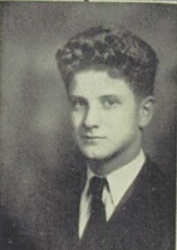 | 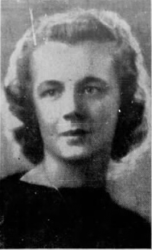 |
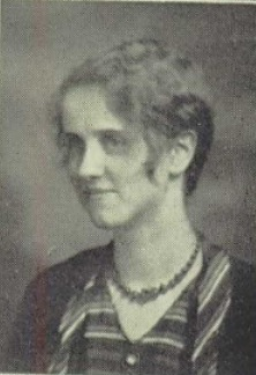 | 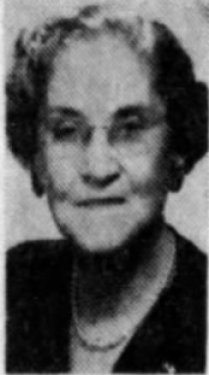 |
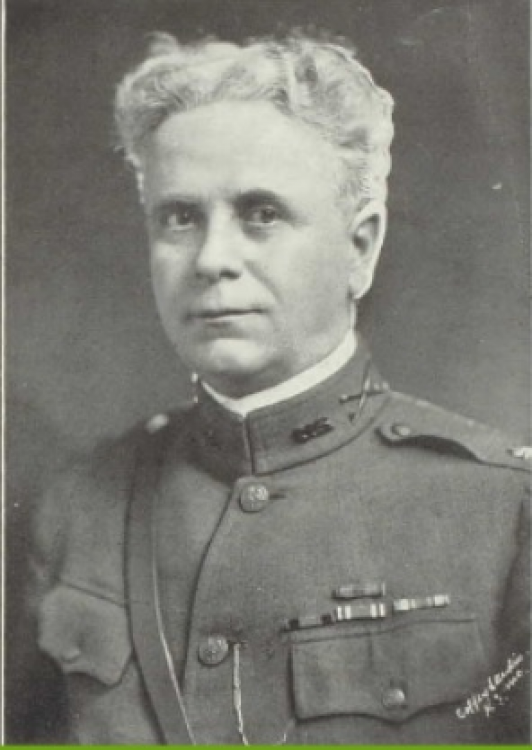 |


